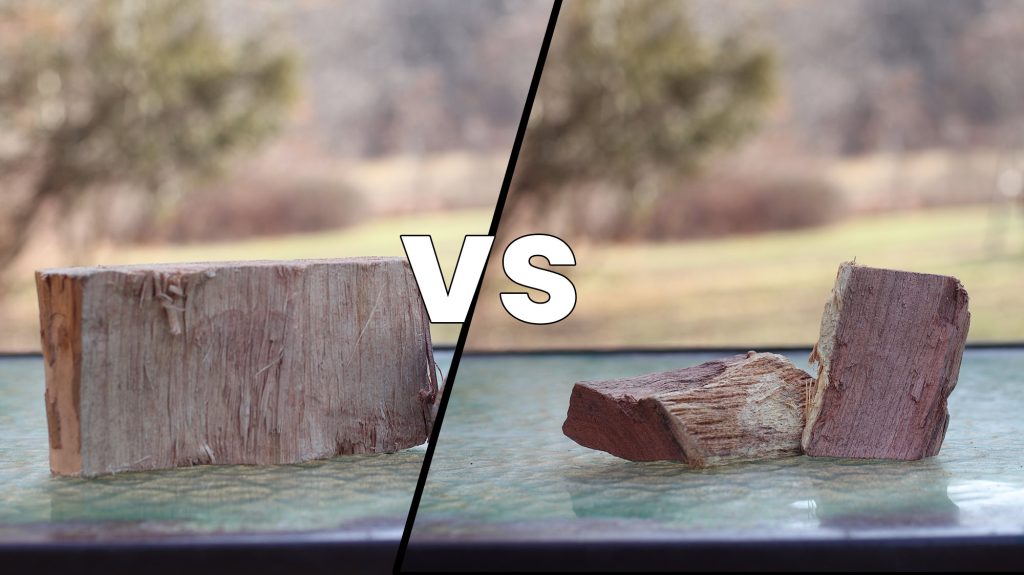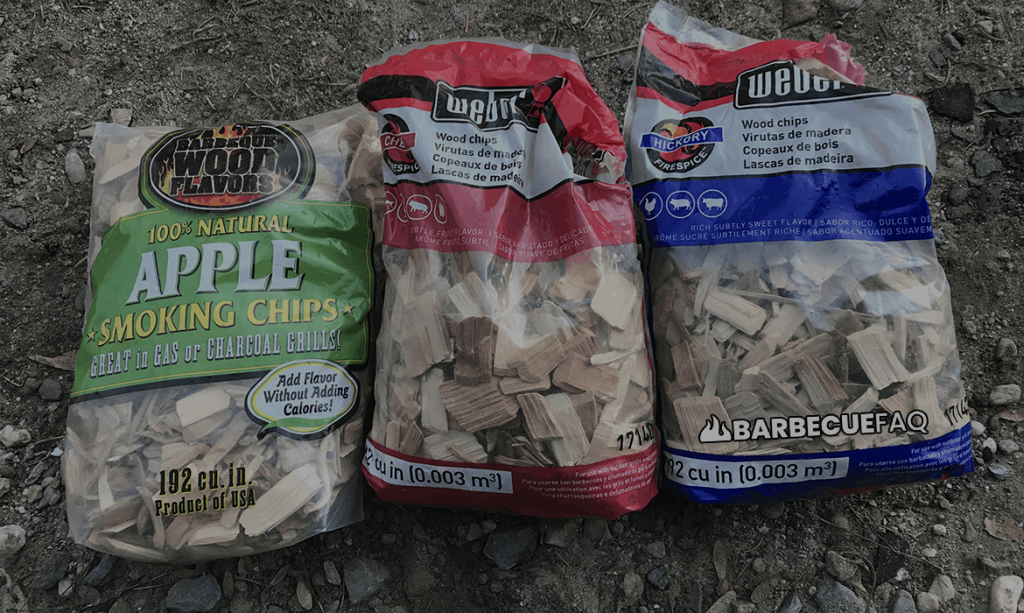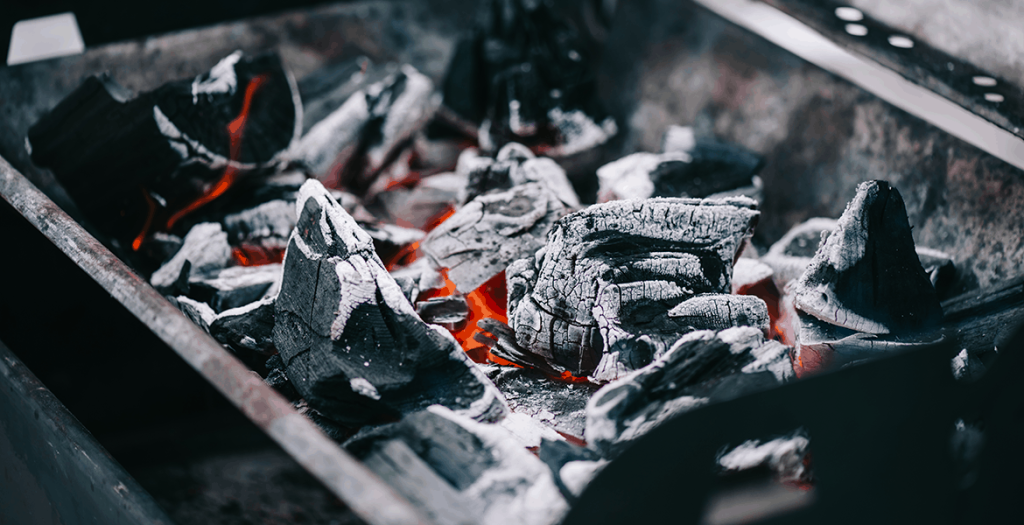So this comes down to “wood science.”
Mesquite contains far more lignin than other smoking woods and that’s why it’s “smokier.”

In my article on thin blue smoke I mention that hardwoods used for smoking are primarily comprised of 3 organic compounds:
- Cellulose
- Hemicellulose
- Lignin
When burned, cellulose and hemicellulose produce carbonyls; These compounds are responsible for most of the color components as well as the sweet, flowery, and fruity aromas.
The breakdown of lignin creates phenolics (aromatic compounds) that create distinct elements like smokiness and spiciness.
In a study by Joseph A. Maga, he found that Hickory’s lignin composition to be 17.66% where-as mesquite contained 63.96%.
If you’ve ever used Mesquite wood to smoke with, you know that it creates a lot of smoke – this is due to the higher lignin composition.
Do Any BBQ Places Use Mesquite?
Mesquite is popular in Texas barbecue.
Places that use it have large off-set smokers and hot fires that feature a very strong draft of convective heat.
Suffice to say, they’re capable of burning hot, clean fires – to the point where that “thin blue smoke” is may actually be entirely clear.
Just to confirm that notion, Tyler Frazer from Tylersbarbeque in Amarillo, Texas notes on X:

Another example is Valentina’s Tex Mex barbecue (owned by Miguel Vidal) – they smoke brisket, chicken, turkey, pork butt, etc. all with mesquite.
These BBQ joints essentially use the mesquite as another ingredient and it’s used strategically to compliment the ingredients in the rub and sauces.
Where-as if these spots used post-oak, those same ingredients may completely wash-out the smoke flavor.
Personally, I’d Rather Use Hickory
Hickory is about as strong as I like to go with “smoke flavor” and I think most people would agree with me.
If I use it, it’s typically with beef OR pork butt.
The only time I use hickory with ribs is when I use Pecan (which is a species of hickory).
The only time I use mesquite is with Beef jerky and I’ll quite literally only use 5 wood chips for the entire duration of smoking it.




